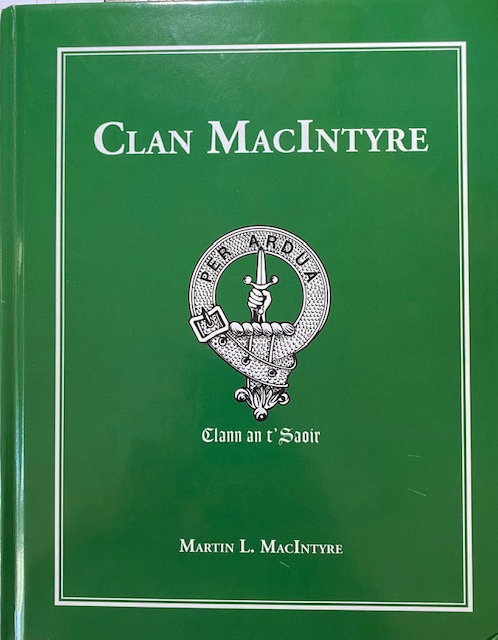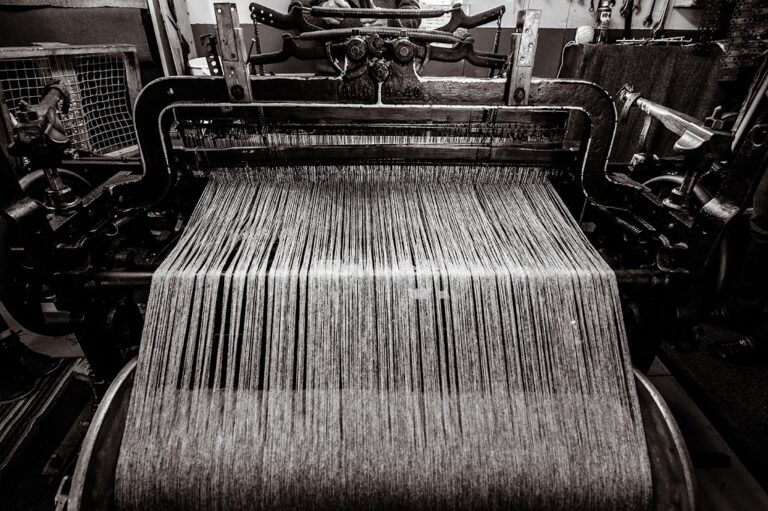So much can be researched online about all of the Scottish clans but perhaps some of you will be reading this for the first time or the information is new to you. I’ll direct you to some favorite links that have been helpful to me in providing in depth information of Scottish history and specifically, Clan MacIntyre. The work has already been done and my contribution would do our history a sorry injustice! Further, I am not a fan of taking someone else’s hard earned research and even remotely claiming it to be mine. I will diligently give credit to many that went before me and gladly take credit only for being the messenger! The resources mentioned are for your benefit if deeper historical knowledge is desired.
That being said, one of my most cherished and very readable histories of Clan MacIntyre is the 2nd edition of “Clan MacIntyre” by Martin L. MacIntyre. Years ago I wandered across a reference to the first edition and have been anxiously awaiting publication for this edition. I’ve gifted this book to both of my brothers, Tim and Scott, and my copy has a place near a few other MacIntyre artifacts collected over the years. This book is listed in the Bibliography including a link to purchase. It is now available on Amazon!! Think Christmas, Birthday or Whatever gift for your MacIntyre loved ones!!


In Scots Gaelic, mac an t-Saoir or Macintyre means “son of a carpenter”. A man’s name in the culture was traditionally handed down from their father, hence the word mac, which means “son of”. The surname was often a reflection of the man’s occupation or trade. The “saoir” word in Scot’s Gaelic means a joiner or a carpenter or a wright. Gaelic uses a dative or prepositional case form in the language, which is why the ‘t’ is in front of ‘saoir’ and preceded by ‘an’. The ‘t’ is a lenition, or softening of the beginning word saoir, so the pronunciation has a ‘tse’ blended sound.
Our McIntyre’s were from the Atholl region of Perthshire, not in the same area where the ancestral clan settled. Wondering what our Scottish ancestors sounded like, their accents and inflections is what has driven me to study Scot’s Gaelic. It takes me back to their place in history, at least in my imagination!. Admittedly, my Gaelic “mother tongue” is still sounding like it’s missing a few generations, but learning that language is a tribal connection my McIntire heritage.
There are variations of how each of our families spell our last name, which may have a regional or familial bearing. You may have noticed misspellings in the census records but generally our family currently spells the name as “McIntire”. Very early records spell it McIntyre but not the old style, Macintyre. Going forward, I will attempt to adhere to what each individual family spelling indicates in the records and please correct me if you see an error.
Clan MacIntyre also recognizes and embraces several septs or family names that are associated with our clan. The anglicized surname Wright along with Tyre and MacTear are common recognized septs of Clan MacIntyre. Several of my friends are Wright’s and have made it known they too are Scottish and a part of Clan MacIntyre. Indeed they are!!
I am a hopeless lover of all things tartan! Christmas is my favorite time to showcase all the tartan wrapping paper, ornaments, decorations, tableware, candles and anything else found in tartan! Finding strictly MacIntyre tartan is a bonus, but quite tricky to find, so at the holidays, nothing celebrates Scottish like a cacophony of TARTAN!! Sigh. We do know that tartan wasn’t made to for decorating homes at Christmas! Given the intense work it took to make and of course the expense and scarcity of raw materials there was a more practical and honorable purpose for each piece of cloth. Besides being used for the warmth and protection from the elements, tartan was an identifying factor for the family and the clan they affiliated with. On the battle field, a soldier wore their tartans like a uniform and to identify what side of the battle they were defending.
Sheep’s wool was spun into yarn, dyed and then used as the warp and weft on a loom to weave the cloth. The infinite number of variations in color, design and pattern of the cloth was used to distinguish between clans. After the Highland Clearances were “over”, tartans could once again be worn, and even became fashionable. Advances were being made in the manufacture of cloth for fashionable wear, opening up the opportunity for clans to once again showcase their tartans for festivals and other activities. Much has been written and discussed about the Highland Clearances and if you care to read more, this is an informative link to check out:
I had the pleasure of watching a weaver at work on the Isle of Harris on a very old machine, powered by the legs of a dear elderly man named Norman. Harris Tweed is a desirable commodity in Scotland and can oonly be produced on the Isle of Harris if it is to be marketed as authentic Harris Tweed. Norman was weaving patterns passed down through the generations using wool yarn, also made right on Harris from local sheep’s wool. What a delight and honor to witness this! Of course, we all purchased beautiful Harris tweed cloth from Norman. Sadly he passed away several years after this video was taken.


In a future post I will write more of our Clan Macintyre tartan and also how a kilt is worn! But for now, I leave you with this adorable kitty, who has taken a liking to some of the Harris tweed brought back from Scotland!! Ironically when my husband and I adopted her several years ago, her name was Harris but we now call her Sasha.
It is nice to know she has a Scottish history too!
Tìoraidh!!
Teri
